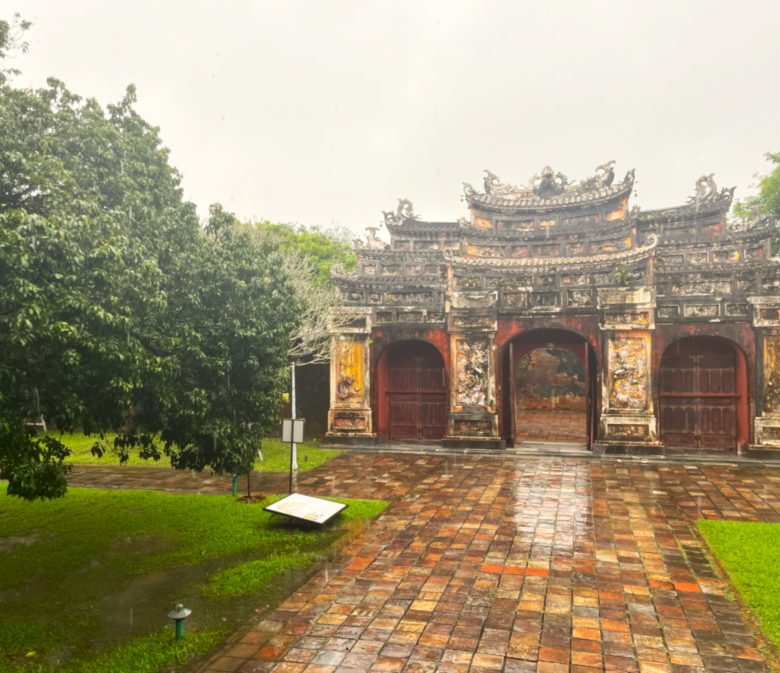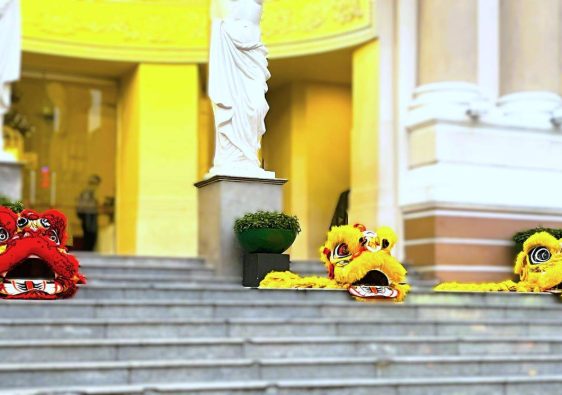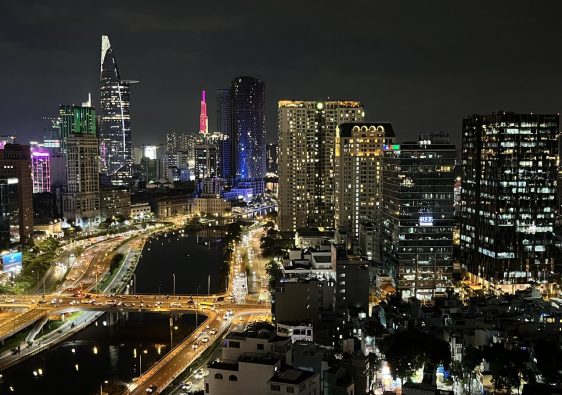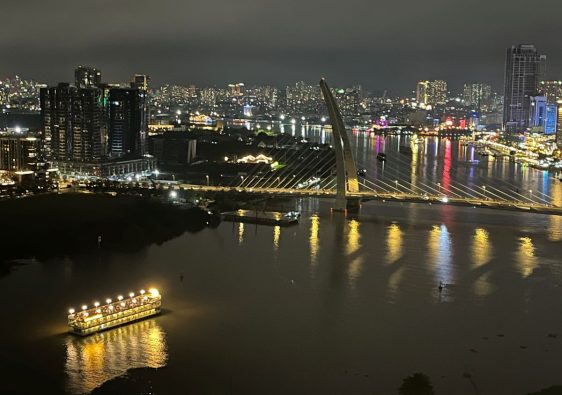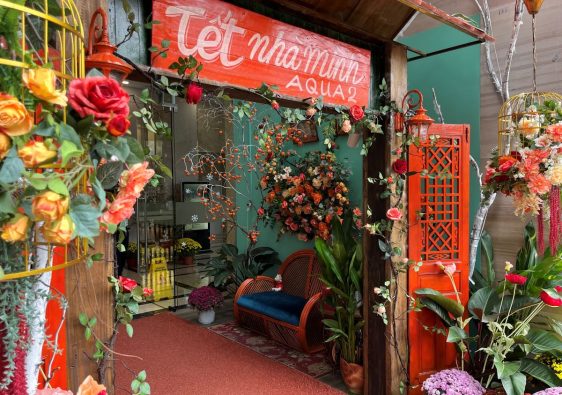While spending a few days exploring the central Vietnamese coast city of Da Nang, we booked a daytrip to the Imperial City of Hue (pronounced like a breathy “whey” as in “curds and whey”.) Hue was the capital of Vietnam during the Nguyen Dynasty (1802 – 1945.)
The journey to Hue from Da Nang includes a breathtaking drive over the Bach Ma Mountains (a part of the Truong Son Range.) We stopped at the top of the Hai Van Pass to admire the unobstructed view of Da Nang and South China Sea. At 1,640.42 feet above sea level, we truly felt like we were on top of the world.
Once we made our way down to Hue, our first stop was the Hue Historic Citadel. The grounds were constructed in 1803 under the first Nguyen Emperor, Gia Long. Based on Beijing’s Forbidden City the site includes the palace, shrines, moats, cemeteries, and gardens.
While all of the cultural sites we visited in Hue are fascinating and most have been designated UNESCO World Heritage sites, my favorite is the Tomb of Khải Định.
Khai Dinh rose to Emperor in 1916 at the age of 31. He was unpopular with the Vietnamese because of his close connection with the French colonial government. He was seen as Emperor in name only (a puppet figure for the French.) At the age of 35, he began construction of his mausoleum on Chau Chu Mountain. The tomb was still under construction when he died at age 40 and was finished by his son in 1931. The mausoleum was the last complex constructed under the Nguyen Dynasty.
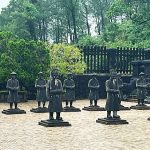
The elaborate design of the structure includes rows of stone figures and animals lining the entrance to the tomb, as well as two huge pillars with candles. All of these are thought to light the way and assist the the Emperor’s journey to the next world.
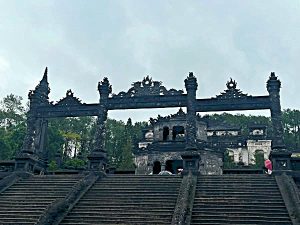
To get to the main tomb, there are 127 stairs that lead to an impressive arched gateway guarded by two dragons. The tomb itself is the smallest of all the Nguyen Emperors (117m x 48.5m). However, it is the most lavishly decorated. All of the walls, the altar/platform, and ceilings are covered with elaborate mosaics made of glass, porcelain, metal, and stone, depicting plants, clouds, dragons, and poems.
The final jaw-dropping piece is at the center of the tomb platform – A bronze-gilded, life-sized statue of the seated Emperor.

Vietnam has a fascinating and complicated history. Visiting a major site like Hue offers us another glimpse into its varied past and helps us understand the culture of this fantastic country that we call home.
